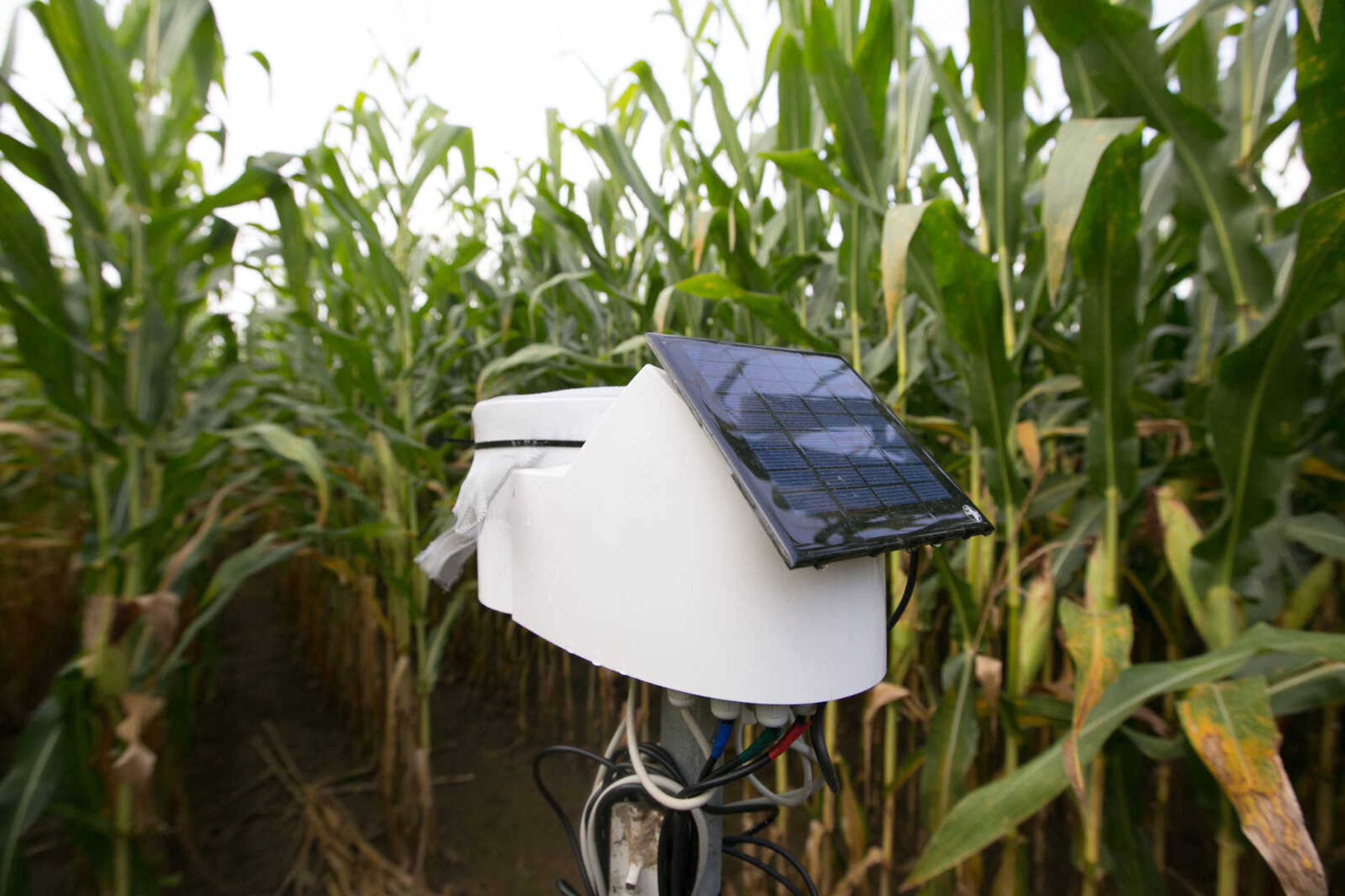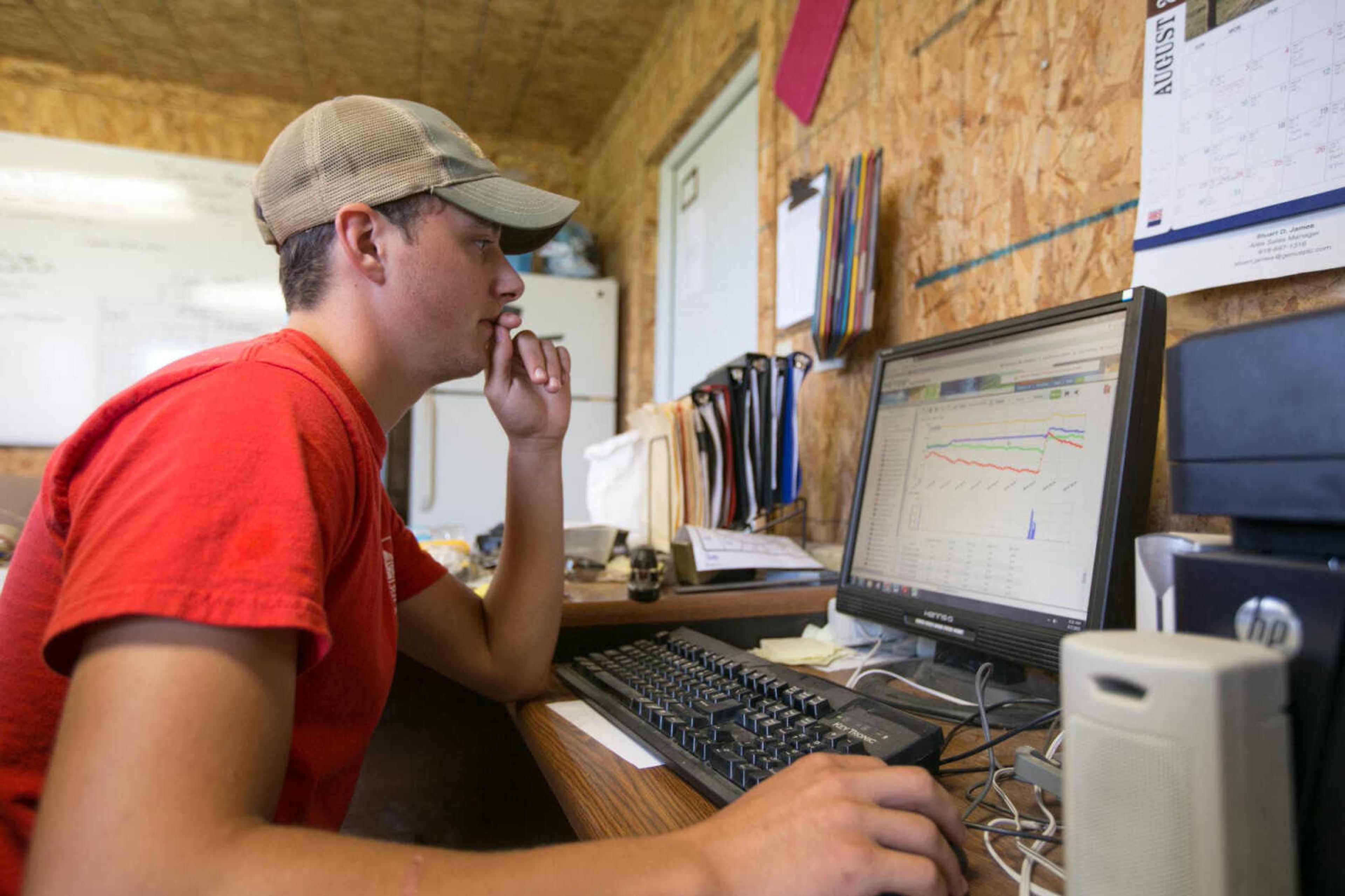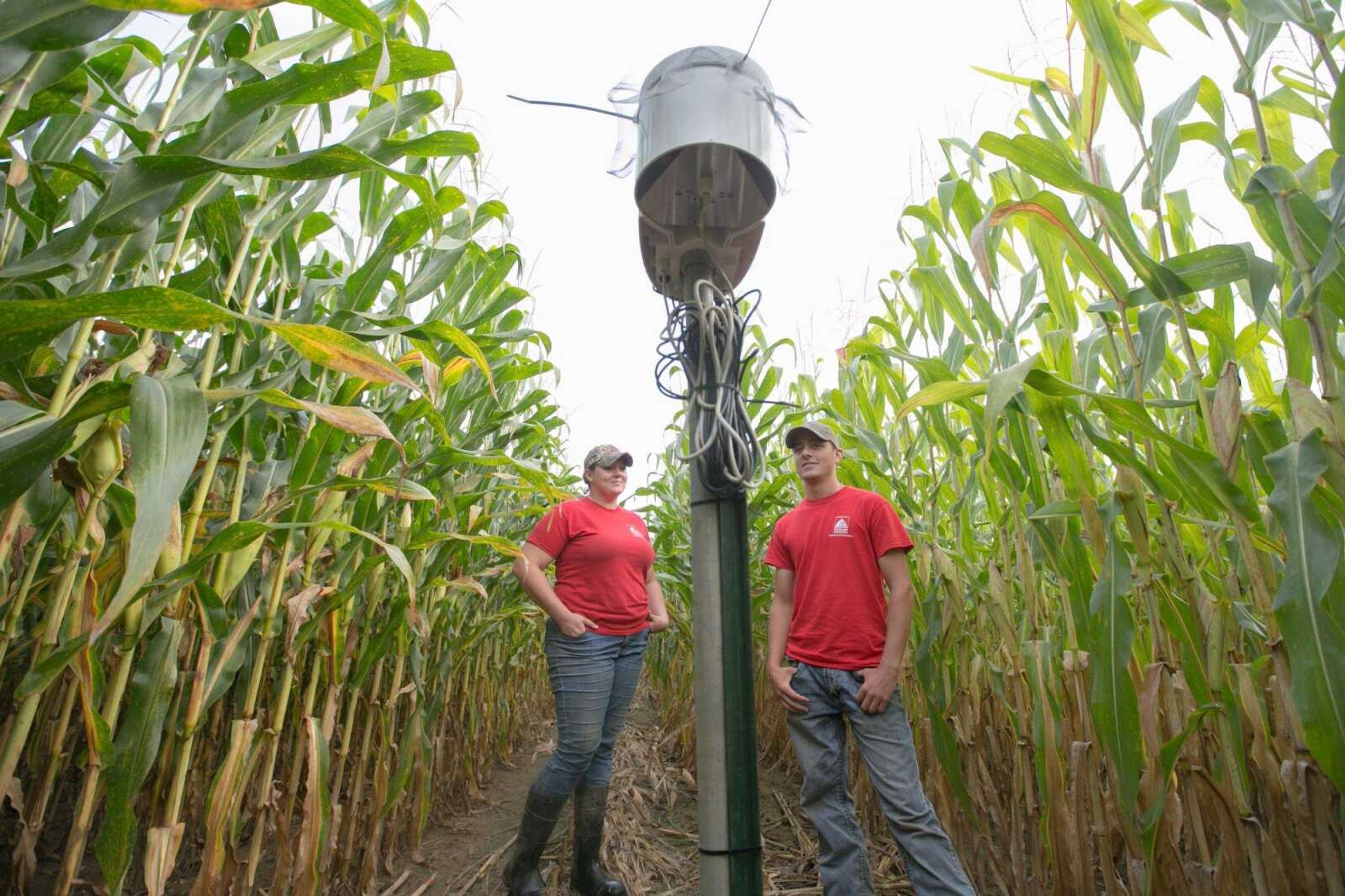Electronic sensors tell Southeast agriculture students and faculty when to water their crops
With the push of a button on his cellphone, Michael Aide, chairman of Southeast Missouri State University's Department of Agriculture, can check soil moisture and turn on the center-pivot irrigation system at the David M. Barton Agriculture Research Center...
With the push of a button on his cellphone, Michael Aide, chairman of Southeast Missouri State University's Department of Agriculture, can check soil moisture and turn on the center-pivot irrigation system at the David M. Barton Agriculture Research Center.
Installed about three months ago, the university farm's latest investment is a soil electronic-sensor system that allows students and faculty to track the moisture in soil hourly.
"In the Missouri Bootheel, 60 percent of the land in agriculture is irrigated," Aide said. "And water applications are a cost the farmer would have to bear. With these new technologies, we can precisely indicate when we should irrigate and when we do not irrigate, to optimize the crops and minimize the producer's cost."

Four sensors in the field monitor four different soil depths. Aide said with the sensors at 6, 12, 18 and 24 inches deep, he is able tell how far water soaks into the soil and how wet the crops' root zones are, allowing him to make the most accurate decisions.
The system consists of a solar array for power, a transmitter to send data to a satellite for retransmission to a computer or cellphone, electronics to support soil water probes at the four soil depths, an electronic rain gauge and an air temperature probe.
"The soil water sensors have been a revolution in the past couple of years as far as how they measure water content," Aide said. "And with the cellphone technology and ability to beam it to a satellite and back down, all of these technologies kind of came together at the same time."

Using this tool to manage their crops, students can use the soil's water status, a rain gauge and the field's temperature to determine whether that field is prone to certain diseases or an influx of insects, using another computer program.
Having access to a variety of technology continues to solidify the idea the agriculture business is changing rapidly.
"I see substantial new technologies coming in in the next year or so that will completely alter how we manage crop production," Aide said.
"Five years ago, I'd have to drive my truck out to the field, get out, walk around and take a look at it, but with my UAV (unmanned aerial vehicle), I can just fly over the crop, look down with the camera system, and I can see if there are any earworms or if there is a problem."
In the future, Aide said he sees more advancement with electronic sensors in fields -- most likely ones that will measure the soil properties and appropriate fertilizer as he drives across the field.
While these advancements are occurring in ag-biz programs at the collegiate level across the state, Aide said he likes to believe Southeast still is slightly ahead of the curve.
Annually, there's an increased need for 60,000 to 70,000 more agriculturalists in the United States, Aide said. And within six months of graduating, 90 percent of Southeast graduates find a position with starting salaries between $40,000 and $50,000.
"It is critical in agriculture that the latest technologies be in the hands of young people so that they can be productive managers of crop production," he said.
smaue@semissourian.com
(573) 388-3644
Pertinent address:
6885 Highway 25, Gordonville, Mo.
Connect with the Southeast Missourian Newsroom:
For corrections to this story or other insights for the editor, click here. To submit a letter to the editor, click here. To learn about the Southeast Missourian’s AI Policy, click here.










